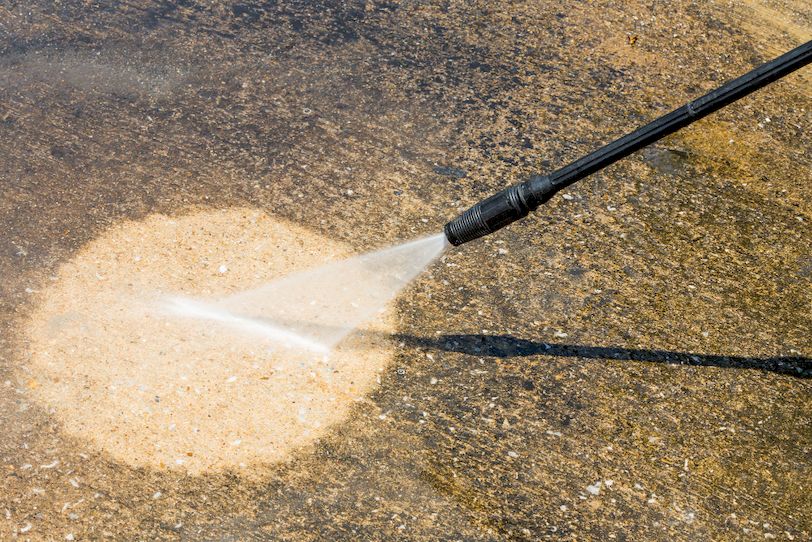Can Tarmac be Safely Pressure Washed for Effective Cleaning?
Tarmac is a durable paving material favoured among construction crews for its ability to withstand heavy traffic and weather conditions. However, to keep it in good shape, it also requires regular maintenance, albeit not more than any other paving material.

Tarmac is a durable paving material favoured among construction crews for its ability to withstand heavy traffic and weather conditions. However, to keep it in good shape, it also requires regular maintenance, albeit not more than any other paving material.
A pressure washer, or power washer, is perhaps the most common way to clean tarmac. This machine uses water at high intense pressures to remove dirt, stains, and greenery like moss, algae, and weeds growing on tarmac surfaces. But how safe is it to pressure-wash tarmac? In this article, we will answer this question and provide some tips on pressure wash tarmac correctly.
The Benefits of Pressure Washing Tarmac
Of the many ways you can clean a tarmac driveway, using a pressure washer presents a faster and more effective alternative. Among the several benefits of pressure washing include:
- Improving the appearance of tarmac surfaces by removing debris, stains, and discolouration.
- Preventing the growth of moss, algae, and weeds, which can take root in tarmac, making it slippery.
- Removing oil and grease spills, which can degrade the tarmac over time
- Increasing the safety of driving and walking by improving traction and evenness.
The Risks of Pressure Washing Tarmac
At their core, tarmac surfaces are simply a mixture of stone aggregates and bituminous binders (mainly tar). This binder is what holds the aggregates together and gives the tarmac its strength and flexibility. However, it is susceptible to water erosion.
As such, even with its array of benefits, pressure washing tarmac also comes with some risks. Most of these, however, can be due to the incompetence of the operator rather than the technique itself. For example:
- Using too much pressure or the wrong nozzle size can cause the tarmac to chip, peel, or erode, exposing the underlying layers and weakening the structure.
- Dislodging the stones or sand from the tarmac can create gaps that can affect the stability and drainage of the surface.
- Using too much water and not allowing it to dry properly can cause tarmac to swell, shrink, and crack as the temperature changes or freeze-thaw cycles occur in winter.
- Inadequate collection or disposal of debris and wastewater can spread contaminants to nearby areas or water sources, harming plants, animals, or humans who come into contact with the pollutants.
How to Pressure Wash Tarmac Safely and Effectively
To avoid these risks and maintain the benefits of pressure washing tarmac, try employing some of these guidelines and best practices:
- Choose the right equipment: You’ll need a pressure washer with enough power to clean the tarmac without causing damage. Ideally, your pressure washer should have a pressure range between 1500 and 3000 psi (pounds per square inch). Anything above is asking for trouble, and anything below won’t provide enough pressure. You’ll also need to consider the nozzle. It should have a wide spray pattern of at least 25 to 40 degrees to cover a large area without concentrating too much force on one spot.
- Prepare the surface: Before you start pressure washing, you’ll need to prepare the surface by removing any loose debris, such as leaves, twigs, and rocks. This reduces the need for excess pressure in areas with significant dirt accumulation. For this purpose, you can use a broom or a leaf blower.
- Apply detergent if needed: If your tarmac has stubborn stains, you may need some detergent to help loosen them. You can purchase a commercial cleaner designed for tarmac or make your own solution with dish soap or regular detergent. Before commencing your pressure wash, apply the detergent with a spray or detergent injector and let it sit for about 15 minutes before rinsing it off with water.
- Dry the surface: After power washing, you need to let the surface dry completely before applying pressure again. Depending on the weather conditions in your area, this may take several hours or days. However, if available, you can speed up the drying process using fans or blowers. Also, consider applying a sealant or extra coating to protect your tarmac from future stains and damage.
Conclusion
If done properly, pressure washing can be a safe and effective way to clean tarmac. However, if you are not confident or experienced in using a pressure washer, you may want to hire a professional local tarmac driveway installer to do it for you. This way, you can ensure that your tarmac is cleaned safely and effectively without risking any costly damages.